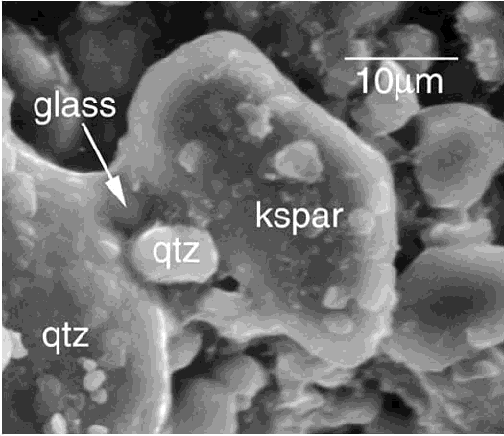



 |
THIN SECTION PETROGRAPHYThin section examination of smaller (2 cm diameter) regolith rock fragments show that phenocrysts at or near the surface are unaltered. Blue epoxy within fractures shows that the fractures permeate phenocrysts and matrix alike. Secondary clay minerals are notably absent from the near-surface fractures. |

|
SEM IMAGES OF GRAIN MORPHOLOGYAggregate grain from regolith exhibiting well-defined phenocrysts and microphenocrysts. |

|
Regolith material in various stages of disaggregation. Note lack of dissolution pitting on mineral grains. |

|
SEM IMAGES OF RESIDUAL INTERSTITIAL GLASSIn the finest fraction of the regolith (less than 63um), crystal aggregates are observed to be bound together by an amorphous substance. |

|
Numerous qualitative X-ray spectral analyses on the amorphous interstitial substance in different aggregates yield very similar spectra (Si>>K>Al>Fe>Ti), suggesting that this is a distinct phase; probably volcanic glass. |

